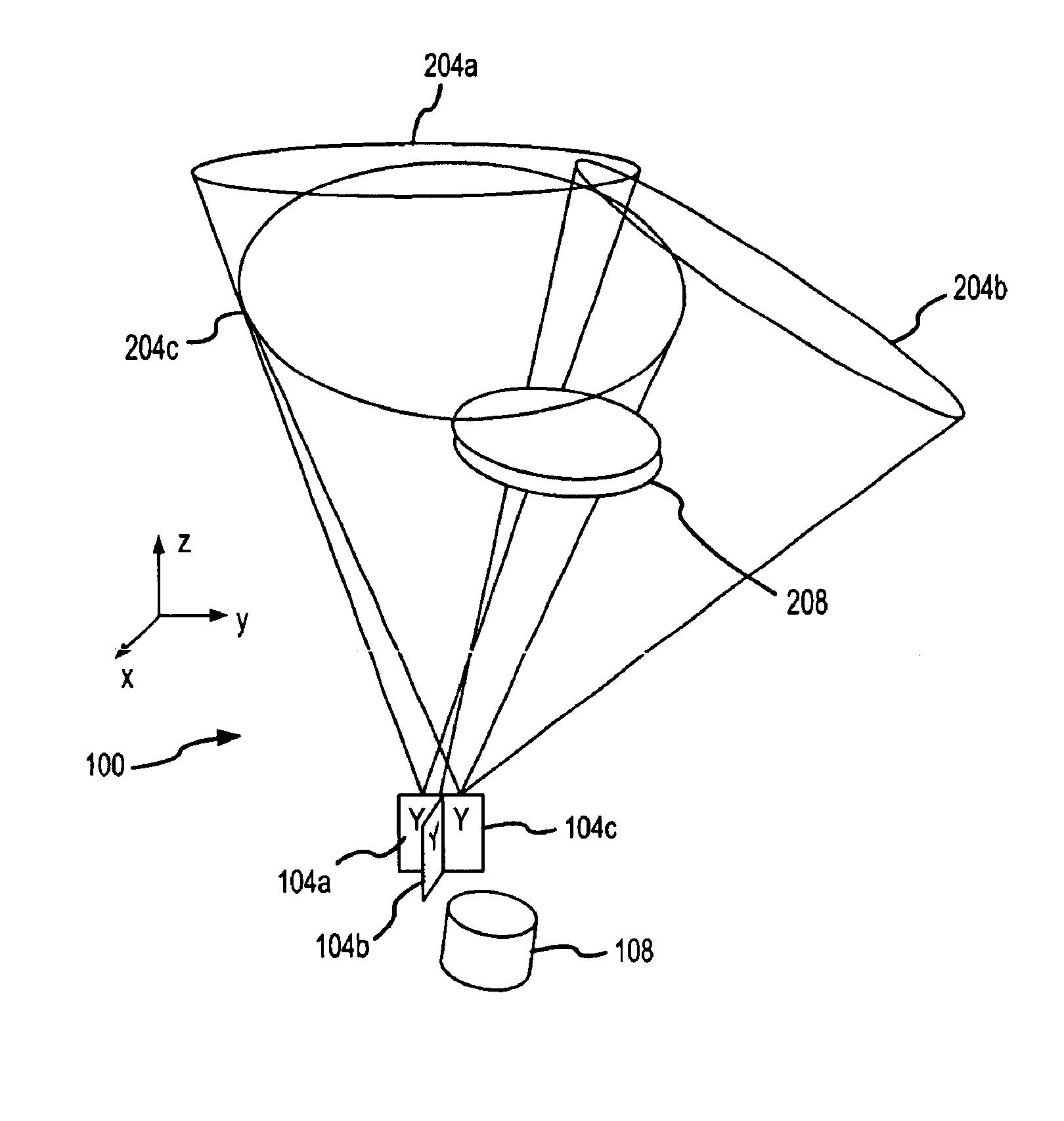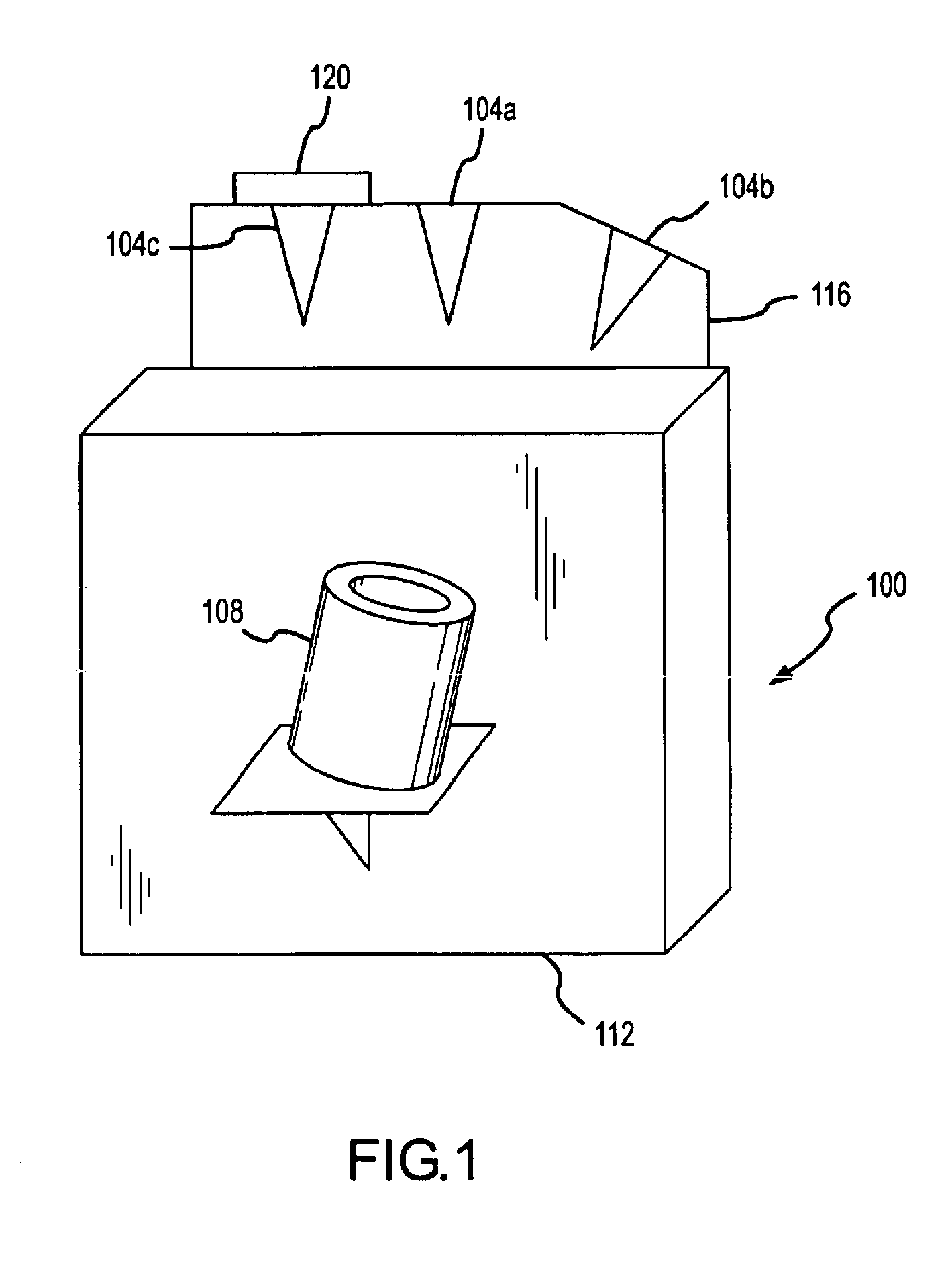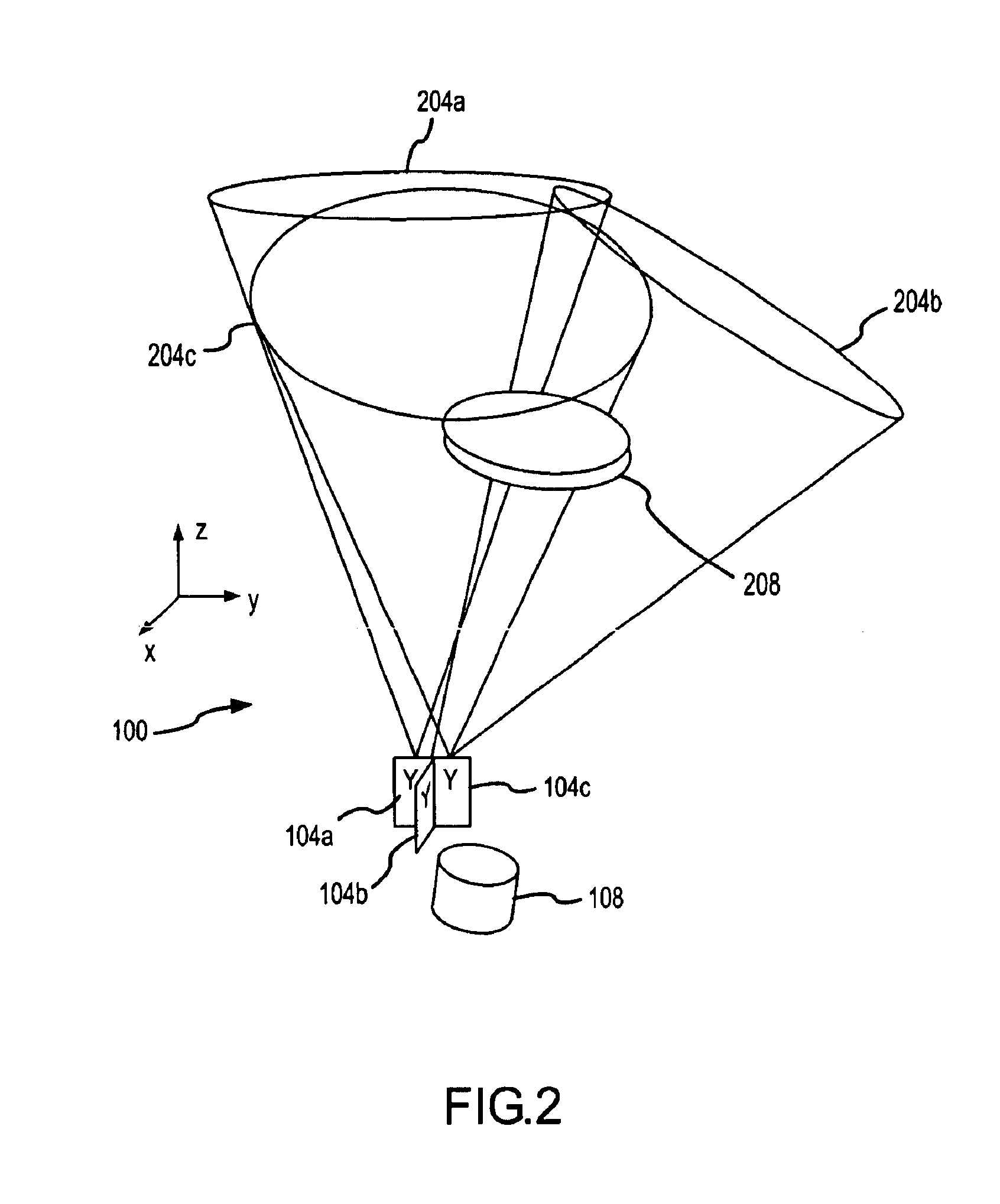Miniature radio-acoustic sounding system for low altitude wind and precipitation measurements
a radio-acoustic sounding and low altitude technology, applied in the field of radio-acoustic sounding systems, can solve the problems of inability to obtain accurate wind data, few backyard or other small-scale weather stations can accurately measure, and often cannot take accurate measurements using mechanical anemometers. to achieve the effect of increasing the accuracy of measurements
- Summary
- Abstract
- Description
- Claims
- Application Information
AI Technical Summary
Benefits of technology
Problems solved by technology
Method used
Image
Examples
Embodiment Construction
With reference now to FIG. 1, a radio-acoustic sounding system for low altitude wind and precipitation measurements 100 in accordance with an embodiment of the present invention is depicted. In general, the system 100 includes one or more radio frequency antennas 104, and an audio frequency transducer 108, also referred to herein as an acoustic or audio transducer 108. In addition, the system 100 may include an enclosure 112 for housing various components of the system 100.
As shown in FIG. 1, the antennas 104 may be formed on a single printed circuit board (PCB) 116. The orientations of the antennas 104 may vary, to provide the desired coverage, as described more fully below. In addition, a metallic plate 120 may be provided in combination with one or more of the antennas 104 to deflect the beam of an associated antenna 104 in a direction that is transverse to the plane of the printed circuit board 116.
In general, the antennas 104 are designed to transmit relatively broad beams (e.g...
PUM
 Login to View More
Login to View More Abstract
Description
Claims
Application Information
 Login to View More
Login to View More - R&D
- Intellectual Property
- Life Sciences
- Materials
- Tech Scout
- Unparalleled Data Quality
- Higher Quality Content
- 60% Fewer Hallucinations
Browse by: Latest US Patents, China's latest patents, Technical Efficacy Thesaurus, Application Domain, Technology Topic, Popular Technical Reports.
© 2025 PatSnap. All rights reserved.Legal|Privacy policy|Modern Slavery Act Transparency Statement|Sitemap|About US| Contact US: help@patsnap.com



